[00:00:00 - 00:04:13]
Will Smith: Today's guest was solidly mid career when he bought a business. Shaun Stimpson had worked for two decades in wealth management, an industry where you're exposed to a lot of successful wealthy people, the clients. One such client had made his money buying companies. Shaun explains how hearing that from the client over lunch one day changed the course of his career. He spent the next five years studying how to do it himself.
Finally, in December 2022, he bought Mitten Fluid Power, an industrial distribution business. He's grown that business and acquired two others, and today Shaun's portfolio does $38 million in revenue. We cover a lot of details, including how Shaun's ownership is structured with his partner and investors, as well as his thesis around industrial distribution.
He recalls being looked at like he.
Had 10 heads when he talked about this category to other searchers at Harvard, where everybody was hoping to buy a SaaS business.
But I think the biggest takeaway from Shaun's story is how acquisition entrepreneurship can be an incredible path, even as a second career. Shaun didn't even really contemplate it until age 39. Then he spent five more years studying search. The search itself took 18 months, so he was in his mid-40s when he acquired his first business. But once he was in the game, things accelerated, as they so often do.
0 to 38 million in under three years. Inspiring stuff. Here he is Shaun Simpson, CEO of Mitten Fluid Power, Flynn Maher Rubber and Plastics and Frank Merkin Products.
This month's legal Office hours is all about entity and deal structuring issues and their tax implications. Attorneys James David Williams and Bill Barlow return to go over some basics like asset versus Stock transactions. But they're also bringing along a tax expert to go over F reorgs, QSBs, S corporations versus partnerships and other topics they frequently get asked about by searchers. So come with your tax and entity questions this month. That is.
Today, Thursday, October 30th noon Eastern. Link to register for the webinar is right at the top of this episode's show notes or on the Acquiring Minds homepage. Acquiring Minds Co welcome to Acquiring Minds, a podcast about buying businesses. My name is Will Smith. Acquiring an existing business is an awesome opportunity for many entrepreneurs, and on this podcast I talk to the people who do it Looking to secure an SBA loan to buy a business?
Meet Pioneer Capital Advisory your Go to Partner for sophisticated buyers who want deals closed quickly and on the best possible terms. The Pioneer team has closed more than 100 SBA loans, averaging timelines well below industry standards. Founder and Owner Matthias Smith and COO Valerie Stash bring over two decades of SBA lending experience. Matthias and Valerie have built a team that meticulously works your deal from underwriting to close. You'll have a full bench working on your behalf, sales associates who streamline onboarding M and a financial analysts who craft investor grade lender decks and an operations team that manages every step of the closing process with institutional level rigor.
Pioneer is not a single person but your true deal team. Visit pioneercap.com or click the link in the notes.
Shaun Stimpson, welcome to Acquiring Minds.
[00:04:13 - 00:04:15]
Shaun Stimpson: Thanks Will. Thanks for having me.
[00:04:16 - 00:04:36]
Will Smith: Shaun, you started as a mid career.
Searcher in your 40s and today you're.
Building toward a large business over the long term in industrial distribution.
Not a space we hear much about in our world. Let's get right into it.
Some background to start us off please. Shaun, background on you?
[00:04:37 - 00:05:22]
Shaun Stimpson: Sure. So I spent, I grew up in the Boston area, spent about 20 years in the wealth management space. About eight of those years was as an individual contributor working directly with customers and Then the final 13 was in leadership divided between six years at Morgan Stanley on the wealth management side and then seven years at bank of America private bank.
And so I left bank of America in 2021, searched for 18 months, acquired the first business in December of 2022. And we're coming up on the, on the three year anniversary which is kind of crazy. It's kind of flown by.
[00:05:23 - 00:05:43]
Will Smith: Yeah, that was very concise. Thank you, Shaun.
Some follow ups. Being in wealth management is actually very sales centric. Right. So say more about. For people who don't know, they might think that that's a finance heavy job, but in fact it's more of a client centric sales heavy job.
Correct?
[00:05:44 - 00:06:23]
Shaun Stimpson: I would say that, yeah. I think when I first got in the business I sort of imagined a firm, you know, handing me a bunch of clients and you know, me managing their money. It's really in the beginning especially it's only like 10% of that. It's really 90% business development.
So growing the business and, and building the business and so it's a lot of going out and, and finding clients and then, and then obviously bringing them into the organization. And I would say it's definitely much more sales business development heavy.
[00:06:25 - 00:06:32]
Will Smith: We'll get there. I'm jumping ahead a little bit. But for example, cold calling was something that you had a lot of experience with.
[00:06:33 - 00:07:28]
Shaun Stimpson: Yeah. So when I, you know, my first job out of school was at Merrill lynch and I would make you know, 200, you know, phone calls a day. And I get to the office at 8, 8:30 and you know, sometimes I wouldn't put the phone down until, except for going to lunch, I wouldn't put the phone down till, you know, seven, eight o' clock at night. And so, you know, as a searcher that was, you know, that was something that I was very comfortable with. And I joke, you know, when I was searching I made about 1200, 1100 calls.
You know, I would do that in a week, you know, at Merrill Lynch. And so my expectation was to call a much bigger number of owners during the search phase. But I was lucky, found some, some opportunities and early on especially and ended up, you know, closing one of those.
[00:07:29 - 00:07:48]
Will Smith: And you, after having only called 11 or 1200, which is about, which is 11 or 1200 more than most searchers call. So, so we'll get, we'll get there just so the audience understands who they're hearing from.
And kind of your orientation, you're a sales oriented person?
[00:07:49 - 00:08:04]
Shaun Stimpson: Yeah, I would say I'm a sales professional that spent the last 13 years of their career in a sales leadership role, you know, really driving business development within the two organizations that I, that I was a part of.
[00:08:04 - 00:08:14]
Will Smith: Great, thank you for that. Okay, so you do, you're in wealth management for.
Almost two.
Did you say two decades?
[00:08:14 - 00:08:15]
Shaun Stimpson: 20 years.
[00:08:15 - 00:08:20]
Will Smith: Yeah, 20 years. Why the, why then the pivot. How did search enter your story?
[00:08:22 - 00:10:10]
Shaun Stimpson: Sure. So I, you know, I did my, my MBA at Babson College. I was working in Wellesley at the time, Wellesley Mass. Which is where Babson is, and did their part time program over two years. And for anyone that knows Babson, it's, it's all about entrepreneurship.
And so you know, during my time there, you know, I just met a lot of people that had alums that had gone there and you know, made, you know, career moves into, you know, buying a business. And you know, so sort of the idea popped into my head that you know, maybe at some point, you know, I would leave wealth management and go buy a company, but I never really put a tremendous amount of thought into what type of company, how would I go about doing it, etc. And so, but it was always something that was in the back of my head. And yeah, I remember sitting, you know, going to a Babson alumni event and sitting next to a guy that joked, you know, he was in, in the corporate world like I was for, for 20 plus years and eventually got sick of it and left and bought a painting business. And you know, I imagine him you know, up on a step ladder painting houses and, you know, after some, some diligence, you know, figured out that he owned a fairly large, you know, commercial painting business and in the Boston area.
So I always, you know, thought if I ever got fired or, you know, I ever got, you know, downsized, you know, instead of, you know, trying to go and find, you know, another, another place that I would, you know, make the leap and buy a company. But, you know, I imagine it happening, you know, in my 50s and, you know, much later career.
[00:10:12 - 00:10:15]
Will Smith: And so why then did it happen? Did you get fired?
[00:10:16 - 00:12:59]
Shaun Stimpson: No, actually, I left on a pretty good note and I, you know, I started exploring search after a meeting that really kind of changed my life.
I was having lunch with one of the advisors that I worked with at bank of America Private bank, and, and the gentleman we were having lunch with was one of his clients and a gentleman that had made his, his wealth and in the private equity space. And you know, I asked him, I said, you know, Bill, how'd you make your money? And you know, he explained to me his, his story. You know, it's the first company he bought, you know, they bought it for 4 million bucks and they put $900 in equity into the deal, this is back in the early 80s, and, and borrowed the rest. And he sold it five years later for a multiple of what he purchased it for.
And he did that 50 more times. And that's how he accumulated his wealth. And the first thing I thought walking out of that meeting was, man, you took the wrong classes in business school. At Babson, I didn't take any type of corporate finance, deal structure, financial modeling type classes. And, and so the second thought in my head was, you know, maybe I should do a little bit more digging and, you know, figure out how this guy, you know, did this.
And, and that's, that's kind of when my journey started. And so I actually went back to Babson at that point and took a couple of classes via a certificate program that they offered. In the second class that I took, which was entitled, I think M and A for Entrepreneurs, they introduced the concept of search. And so that began what eventually was a five year kind of knowledge grab for me because I was older at that point and I started that, that was 2016, so I was 39 at that point. And I spent, you know, five years, you know, studying search, talking to a lot of searchers, you know, people that had failed, people that had bought companies, people like me that were thinking about search.
And you know, I talked to probably about 100 people over that five year window that somehow were related to the search field. And, and then eventually, you know, made the leap and launched my search in June of 2021. And yeah, it took me 18 months, but I finally did it.
[00:13:00 - 00:13:31]
Will Smith: Shaun, this client of your, of your managers, this guy at lunch who, who you, you hear his story, you ask him how he made his money. I assume being in the wealth management world, you're con, you were constantly, for 20 years in fact interacting with wealthy people.
And that, that probably wasn't the first time that you would ask one of them. So how'd you make your money? Maybe that was a question you asked everybody. Why did his method of making money strike you? So why did it resonate with you so much?
[00:13:32 - 00:15:21]
Shaun Stimpson: That's a great question. I think that typically a lot of the people that, that, that I would meet, you knew, you know, they, they had founded a company and, and built a business or you know, in the private banking world, you know, we were dealing with extremely wealthy people and so a lot of their stories were very public. This guy, his story wasn't as public and so I didn't really know it as well as some of the other folks that I had met. And it's interesting kind of as a side topic, you know, as I was trying to develop my investment thesis on, you know, what type of company I would buy if I did leave and do a search or earlier in the phase before I knew about search, you know, what type of company I'd go out and buy. A lot of the CEOs that I would meet, I could think of this one guy that owned a chemical business and asking him, you know, how much do you actually know about, you know, the chemicals that you're, that you're making?
And, and he said, well, I couldn't go into a lab and, and mix things up. But at a high level I, I understand what we do and you know, my role is more from a strategy and from a leadership perspective. And so, you know, a lot of those conversations were encouraging to me that I didn't have to go and, and, and try to acquire a wealth management business that, you know, my skills and leadership were transferable to other industries. Hence, you know, how I ended up in the industrial distribution world.
[00:15:22 - 00:17:31]
Will Smith: Great.
And we are, we are definitely going to want to hear how you develop that thesis. As I said, not, not a typical place searchers look.
You know, Enzo Technologies as one of the leading IT managed service providers serving the search community, led by Nick Akers, an Acquiring Minds guest who bought the 35 year old business? The team at Enzo regularly works with searchers and their acquisitions. And one feature of acquired businesses that Enzo is seeing over and over is the need to implement cybersecurity promptly during the transition.
So many acquired small businesses either have glaring vulnerabilities, lack security best practices or both. That step one to de risk the deal you just closed should be addressing these issues. INSO is your full service IT MSP for post close stability. They assess your target, surface the biggest risks in plain English and give you a day one through 30 plan to cut exposure, prevent downtime and even find cost takeouts like bloated telecom bills. Check out enzotechnologies.com I N Z O or email Nick directly at nicknzotechnologies.com.
These finance classes that you went back and took because you said to yourself, boy, I did not take the right classes when I was in business school the first time. A lot of people may not even have an mba and the finance piece or the modeling piece is the key hard skill that they lack in, in, in buying a business. And it's very intimidating off putting to a lot of people.
Tell us about your journey from knowing less to more about finance. How important do you feel like those two later classes you took are? Do you recommend other people do something similar, expand on that little piece for us?
[00:17:32 - 00:19:20]
Shaun Stimpson: I would highly recommend it. You know that gentleman that you know that I had lunch with, I remember, I'll never forget, he said to me, he goes, sean, private equity is nothing more than a complex math problem.
And so the modeling and deal structure and you know, understanding the, the key variables, I think my personal opinion, I think that's an imperative part of, of the diligence process. And so being able to solicit financial statements from, from the owners that, that I was talking to, the sellers that I was talking to, and then to, you know, build a model, create a deal structure and forecast out, you know, what I thought the business was going to do over time. I don't know what I would have done if I didn't have that experience. And I think having that ability really kind of lessen the burden for me of relying on outside advisors. And I'm assuming you could probably pay a CPA firm, you know, an outside provider to, to build those models and to, you know, diligence, you know, the financials.
Obviously when you're making an acquisition, you know, doing a quality of earnings is, is imperative. But leading up to that, a lot of that diligence that I did, I felt I saved quite a bit of money in the search phase and it also allowed me to get to know the companies a lot better, I think, than most, you know, as you're going through that process and you know, import in inputting all the different variables into that model.
[00:19:22 - 00:20:08]
Will Smith: And even the value of doing it that you just described outweighs the fact that you're probably not going to do it as well as a third party service provider. If, if, you know, some searchers listening, you know, they may do a few models, it may be their first models because they're not, they don't come from finance land, whereas they could have their diligence provider do that. And the diligence provider does it all day long.
And so it's kind of like, you know, learning a skill, not very well when, why not just outsource the whole thing and just invest your time in finding a good, a good, a good service provider to do that rather than kind of trying to figure out how to do it yourself.
[00:20:09 - 00:21:34]
Shaun Stimpson: So I'm someone that doesn't come from a fields, you know, we're, you know, building models all day like investment banking or consulting. And so, you know, I, I think over time I, especially during the search phase, I got better at it and it made me personally made me, I feel a better negotiator, you know, better at diligence, you know, better at digging in, you know, with the seller. And so yeah, it may, you know, it may stop once you buy a company and you know, I don't know how many people like me are, are aspiring to go out and continue to acquire, but it's at least for, for what I'm doing, you know, where we're not stopping and haven't stopped with one acquisition, you know, it's something that I've continued and, and again, I think it saves you some, some money on the diligence while you're searching and in post search, but the more important piece of it is it allows you to, you know, really get into the weeds on the numbers and really understand the business at a different level. Whereas if I didn't have that experience and I was relying on someone else, I'm not sure how well I would truly understand the numbers and, and the story behind them.
[00:21:34 - 00:21:50]
Will Smith: Yeah, yeah, that's well put, Shaun. Okay, great.
And so these finance classes that you.
Took that you went back to Babson to take, what did you take? And, and, and lay it out for people who might say to themselves, boy, I, I, I could do that, I should do that.
[00:21:50 - 00:22:27]
Shaun Stimpson: Yeah, this was A certificate program. I started out just calling up the school and saying, hey, is there, is there a platform that would allow someone that already graduated with an MBA to go back and take a couple of classes? And they recommended that it was a nine credit certificate program that, you know, had an application process, you know, required the gmat, but was fairly simple. I mean they already had all my records and everything. So it was a pretty easy process to tackle.
[00:22:27 - 00:22:29]
Will Smith: Ah, but it did require the gmat.
[00:22:30 - 00:24:09]
Shaun Stimpson: I think it did. I'm pretty sure that it, it did. Yeah, I'm pretty confident that, that. Well that's, yeah, but go ahead.
And so, so I, you know, went back and, and took two classes over two different semesters. And the first one was, I think entitled Entrepreneurial Finance. It was a case based class where you would look at different acquisitions in each case, build out models and then make the case for the structure that you selected to do the acquisition or buy the business. And it was, you know, 15 weeks of, of of doing that over and over and over again. And then the second class was also case based.
It was as I mentioned, M and A for entrepreneurs. Case based but also introduced other topics that like search and, and you know, dove in deeper into know, different types of financing structures. And the professor brought in, you know, people that had bought companies, whether it was through a search or some other, you know, some other avenue. And you know, really kind of, it was kind of like the second, second iteration of, of the first class that I took. So it was a good, you know, a good progression of, of of coursework.
[00:24:09 - 00:24:10]
Will Smith: And these were remote.
[00:24:11 - 00:25:19]
Shaun Stimpson: Well, actually so the first one was not, the second one was remote. At the time Babson had a program that allowed part time MBAs to, that were coming from other geographies where they would do an online. It was kind of a hybrid program where they would do the majority of the coursework remote virtually combined with a couple of full day in person sessions. And the students that were in that curriculum, you know, the classes, the full day classes would be, you know, all day Friday, all day Saturday.
So they could, they could make the trip up from Miami to do that program and not have to make multiple trips, you know, throughout the course of the semester. So it was coordinated. And so for me at the time I was, you know, traveling quite a bit. And so it was perfect for me because I could, you know, remote in every Wednesday and then, and then I was, you know, just took a day off from work to, to participate in the full day sessions on the two Fridays.
[00:25:20 - 00:25:49]
Will Smith: Yeah, yeah, well, it sounds really valuable.
It's taking the GMAT to access something like this. And then the time commitment itself is obviously, you know, a year plus commitment in and of itself, but it sure seemed like it set you up nicely and filled a gap in your knowledge that a lot of people listening will, will all will similarly have. So I just, I thank you for, for sharing how you did that.
[00:25:49 - 00:26:55]
Shaun Stimpson: Sure. Very valuable for me.
The other piece to it was, you know, these professors, you know, were invaluable advisors to me through the search process. And so the gentleman that taught the, the second class that I took, and I should probably write him a check for 50 or $100,000 for all the sort of consulting work that he did or advisory work that he did for me, you know, through the search. And so the, the, the, the network that I was able to build, you know, through that program was, was invaluable. And it was, you know, started with those two professors and you know, there were a couple other professors that they had introduced me to that, that I really leaned on. And I don't think I would have been successful had it not been for the guidance and the, the advisory relationship that, that they have.
So that was kind of a unplanned, call it, benefit of, of going through that program.
[00:26:56 - 00:27:07]
Will Smith: Yeah, absolutely. Great, Shaun. Well, let's turn our attention now to what I keep teasing, the industrial distribution thesis. Why did you choose that industry?
[00:27:09 - 00:29:19]
Shaun Stimpson: So I had back to my, my days as an advisor where I worked directly with clients. I had a client that owns an industrial distribution business and, and so he turned me onto that space. And, and, and so when I started to get a little bit more specific into the type of business that I wanted to buy, you know, I really started to dive into that, into that space and you know, understand, you know, not necessarily how the business operated, but, you know, the characteristics of that business. So a lot outside of a few states that are, that are in the south, most of these companies, you know, aren't, aren't concentrated in one particular industry. You know, some, not a lot, you know, have, have customer concentrations, but, but most don't.
The companies that we've bought don't have a significant customer concentration. You know, the technical knowledge of that that exists within these businesses at a larger size doesn't only rest with the owner themselves. But I also found that at least in New England, the sampling that I did, there were a lot of owners in their 60s and 70s that didn't have a succession plan, you know, and I used LinkedIn to try to scout out to see if a child or a sibling, you know, worked within the business. And you know, at face value, I didn't see a lot of companies in the space that had a succession plan. And again, most of the owners were in their 60s and 70s, so I thought, you know, there was not a succession problem, but certainly an opportunity for me to focus on an industry that had a lot of owners that, you know, might be open to selling to someone like me.
[00:29:19 - 00:29:57]
Will Smith: Yeah. Well, on the other hand, a lot of the industries that searchers look at have, have that same dynamic. And in fact, when we're sold on ETA broadly, that's something that is, is a kind of a sweeping generalization about so many small businesses in America that there's not, there aren't succession plans in place.
The.
Give us an example of, of a skew or.
Yeah, of a skew that you would distribute. So just a better picture because it still feels kind of abstract when I think industrial distribution.
[00:29:57 - 00:30:07]
Shaun Stimpson: Sure. So 50%. If you combine the three companies that we own, 50% of our sales are fluid connectors.
[00:30:09 - 00:30:10]
Will Smith: Fluid connectors.
[00:30:10 - 00:31:13]
Shaun Stimpson: Fluid connectors. So fluid connectors is a fancy term for rubber hoses or hydraulic hoses. And so if you think of like a, like a John Deere tractor, there's a lot of rubber hoses on that John Deere tractor. And so in the, the retail component that we operate, we'll get a lot of farmers walking through our door with a busted hose.
And so our job is to, you know, get them up and running as, as fast as possible. And so, so we'll find the right hose, we'll find the fittings that go on either side of the hose, will fabricate those onto the hose and, and then get them on their way. And so, so again, 50% of, of the businesses are those rubber hoses, which, you know, you'd be surprised at how many, how many things out there have rubber hoses on them.
[00:31:13 - 00:31:13]
Will Smith: Yeah.
[00:31:14 - 00:31:18]
Shaun Stimpson: In the type of businesses that we're touching each and every day.
[00:31:20 - 00:32:12]
Will Smith: But Shaun, I, I heard you say that they're outside of the South. Most of these industrial distributors don't play in a single industry, that they're, that they span industries. But I would imagine that the way you'd add value as an industrial distributor is you'd be deeply concentrated in a single industry and you'd be the one stop solution. Anything you need for that industry and you, and you just go deep on an industry. I don't, I'm speaking out of turn here or beyond my pay grade, but I, I think of like, aren't in the, in the kind of hospital medical space.
Isn't there like Cardinal? Aren't there a few big names where it's like they just provide all of the medical supplies to all the hospitals? And, and it's a totally consolidated and there's just like two or three big. One sort of, sort of dynamic.
[00:32:14 - 00:33:30]
Shaun Stimpson: I would say at the manufacturing level there are certainly a couple of dominant players.
And we, we represent one of the most dominant, at least what we feel is the number one manufacturer in the rubber hose space and the number one manufacturer in the hydraulic space. We represent Parker Hannifin, who is, is one of the 800 pound gorillas. But you know, from a distribution perspective, it pays at least in my eyes, to be, you know, diversified. We're, I would say product experts when it comes to the products that we're selling in the applications that they're, they're being used for. But those applications can span a lot of different industries.
And so, you know, you look at the bigger industries that, that our company focuses on. You have power generation, you have rail defense, aerospace, and, and so, you know, we as a manufacturer are broadly diversified, but the products and the knowledge that it takes to apply those products is pretty consistent across, you know, all those different industries.
[00:33:30 - 00:33:50]
Will Smith: Okay, okay. Okay, great. And then one other good feature of distribution, I assume is that there's a recurring or highly reoccurring nature to it that you have.
You're connecting manufacturer or supplier with end customer on a regular basis.
[00:33:51 - 00:36:29]
Shaun Stimpson: Yeah. So I'll throw a stat out to you. When the third letter of intent that we signed, we were the folks that lent us the mezzanine debt to buy the company also are an equity investor. And so one of the things that they look at is they look at the last five years of sales and what percentage of sales come from customers that buy in all five years.
And so I remember the third company that we went through the diligence process with, their number was like 65%, which they were blown away by because in a PO type business, not sort of a non contractual type customer relationship in their eyes, north of 40% was a good number. So for this company to be at 65% was amazing. And so Mitten, we walked away from that third business that we had under loi, and Mitten was the fourth LOI that we signed. They did that same analysis and the number was 81%. So 81% over the last five years were from customers that bought from us in all five of those years.
Then when we bought Frank Birkin products the number was 83% and then, and then flyn mar the number was 85%. And so the repeat relationship or nature of the customer relationship is significantly high and it's because of the value add that we're providing. I mean the customers come back to us because I think we're number one, we're selling a high quality product. Number two is, you know, we're delivering it to them when they need it, whether it's at kind of point of emergency or, or we're delivering it on a monthly basis if it was like an OEM type, you know, type customer. But I also think it's the advisory relationship where the value add piece that, that our company provides, whether it's from an engineering perspective or, or from a customer service type perspective.
But, but yeah, it's, it's, it's a pretty high repeat business, at least the companies that we've looked at.
[00:36:31 - 00:36:49]
Will Smith: Great. Well, let's return to the search before we get more into the businesses that you bought which, which we're going to do. So when you talk to other searchers, when you went to the ETA conferences and you told them you were looking at industrial, I remember you talking about the funny reaction. Say more about that.
[00:36:50 - 00:37:39]
Shaun Stimpson: Yeah, so you know, when I was in that five year window thinking about and studying, you know, how I'd go about this, I, I attended the, the HBS search conference and it just seemed like everybody at that point in time was going after a SAS business and so, so when I said industrial distribution they, they looked at me like I had 10 heads. But, but, but yeah, it's you know, appears to be, you know, a boring business and you know, appears I guess less exciting than, than a SaaS business or, or now I feel like, you know, so many searchers are focused on the healthcare space but, but yeah it was, I got a lot of funny looks and you know, it's worked out so far.
[00:37:39 - 00:37:44]
Will Smith: Do you still feel like it's a good industry for searchers to look in?
[00:37:44 - 00:38:23]
Shaun Stimpson: I do, I, I think it's a phenomenal industry and you know, low capex, you know, predictable cash flow.
You know, again, lot of, lot of retiring owners and so I, I do think it's a, an attractive business that, that a searcher could step into if the, if the right employee base exists, meaning the technical expertise exists beyond the owner. And so I do think they're, they're great acquisition targets for, for searchers and.
[00:38:23 - 00:38:29]
Will Smith: Are they concentrated in a particular region? Do the, do these Cluster anywhere, these industrial distribution businesses?
[00:38:29 - 00:40:44]
Shaun Stimpson: No.
So when I, when I left the bank, as we alluded to earlier, I, my method of outreach was cold calling. And so I cold called, you know, 1200 owners in the 18 months that, that I was searching. And so how I found the people to call is I, I bought a list of, of all the industrial distributors under, that fell under an NAICS code. I forget what the code number is. It's like 423860, I think it was.
And so there were 29,000 industrial distributors in the U.S. wow.
And so the list that I had, if I did it all over again, I probably would have bought a couple of SIC codes that, that, you know, were, were much more, you know, focused. But, you know, the list only cost me, you know, a couple thousand dollars and you know, I started scrubbing it and, and, and looking into, into businesses. And so I was calling all over the country and, and, and they're not concentrated in, in one particular area. You know, there's know, industrial distributors, you know, that exists, you know, in Alaska, Hawaii, you know, everywhere. I was really focused on a particular, or I should say I wasn't focusing my time and energy on companies that were like, I kind of look at them as like the auto dealer model.
So think of like Caterpillar, deer, you know, ditch which type dealers. I didn't want to buy a rental equipment business. So think of like cranes and you know, bulldozers and you know, there's a lot of equipment dealers that fall into that category. So I wanted pure distribution in the hydraulic pneumatic fluid connector, instrumentation, seal space. And so that was a subset of the, of the 29,000.
[00:40:46 - 00:40:53]
Will Smith: And so actually your thesis was, was dialed all the way down to wanting to be selling rubber hoses?
[00:40:54 - 00:41:07]
Shaun Stimpson: I wouldn't say that. I would say my thesis boiled down to focusing on companies that were value add distributors that.
[00:41:07 - 00:41:09]
Will Smith: And what does value add mean? You've said that a couple times.
[00:41:09 - 00:42:17]
Shaun Stimpson: Meaning, you know, different types of light manufacturing, whether it's hose assembly or assembly of sorts. You know, we have a systems team that, that designs, builds and tests hydraulic systems for customers. And so, you know, I would, I would label it as somewhat light manufacturing, but you know, it was, it's not someone coming to us saying, I want, you know, six of these and, and our job 100% of the time is to deliver, you know, X number of widgets. There was an advice component that's built into the sales process. And so there's a reason, you know, they're coming back to Us that's not solely on price.
And so the advisory piece or the value add piece is, is what separates you a lot from, from a price perspective. And you know, our main supplier is, is never going to be the cheapest option because of the quality. And so you know, we have to compete on, on other levels besides price. And so the value add component is, is how we do that.
[00:42:18 - 00:42:44]
Will Smith: And that also answers a question I had meant to ask about industrial distribution.
That distribution broadly has the reputation of having pretty tight margins because I guess to your, to your very point it can be quite commoditized. It's just getting you know, widgets from point A to point B. And so how you, how, how you enjoy better margins is through value add?
[00:42:45 - 00:43:00]
Shaun Stimpson: I would say yes and I'd also say from a quality perspective. So the, the suppliers that we're representing are the majority are very high quality.
And so that allows us to, to build a little bit more margin into the pricing that we're charging.
[00:43:02 - 00:43:09]
Will Smith: And can you share what, what net margins would be in, in a business like yours or what they are in your business?
[00:43:09 - 00:43:20]
Shaun Stimpson: Yeah, so, so we're, we're right around 40% gross profit and then, and then EBITDA margins are, are between 10 and.
[00:43:20 - 00:43:25]
Will Smith: 12% which is high in distribute for distribution businesses.
[00:43:26 - 00:43:46]
Shaun Stimpson: I would say it's, it's high for distribution, it's not high for value add distribution.
So if, if there is the value add component typically in the businesses that I looked at while I was searching that, that those margins were fairly normal.
[00:43:48 - 00:44:49]
Will Smith: The team at Aspen HR recently published a short white paper targeted at searchers Entitled A New CEO's Guide to Human Resources. It lays out the key items you should be thinking about as you transition into CEO and owner of the business you bought. The link to download it is in the show notes. Aspen is a professional employer organization or PEO run by a searcher for searchers.
Search fund veteran Mark Sinatra runs the company which provides HR compliance, flawless payroll, Fortune 500 caliber benefits and HR due diligence support for your acquisition, all for a fraction of the cost. Go to Aspen hr.com or contact Mark directly at Mark aspenhr.com.
Shaun returning to this cold calling. So 1200 companies and it worked. Tell us about your experience of doing this cold calling.
[00:44:51 - 00:47:33]
Shaun Stimpson: Yeah, so I'll tell you, I'll start out by saying why I landed on calling is is, you know, as I mentioned I talked to 100 plus searchers, you know, during my diligence phase and it seemed like to me that, that the folks that were finding companies or finding acquisitions faster than others were the ones where they were doing some type of proprietary search. So they weren't necessarily leaning on bankers and brokers to bring them deals.
They were actively out looking for deals through cold calling, emailing, you know, letter writing. I met, you know, some searchers that, that would, would do handwritten notes and, you know, send small gifts. And, but it was, it was, they were the ones that were in control of, of the process and in their pipeline. And so, you know, I was older, I have, you know, two kids, a wife, a mortgage. And, and so I'm not saying I needed to be a sprint, but I needed to take the high percentage shot in my eyes.
And so calling, which was something that I was comfortable doing, you know, back when my cold calling days at Merrill lynch, you know, calling was, was the avenue for me. And so, you know, so I would call the owner generally nine times out of ten, you're not getting them on the phone. And so I would ask to be put into their voicemail. And you know, people always ask me, you know, how do you deal with the, with the administrative assistance or the receptionist? And you know, I would just really push to be put into, into the owner's voicemail.
And so I leave a voicemail. Hi, my name's Shaun Stimpson. I'm a well capitalized buyer looking to buy a business in the industry that you operate in and wanted to see if you'd be open to having a conversation with me about your business and see if selling is, is something that's in the not so distant future for you. Wow. And very direct.
Very direct. After I left that voicemail, I would, I would then send them an email following up with some, some marketing materials attached to it about me and my search and you know, what I'm trying to do and I'll come back to that in a second. And, and I had a pretty good success rate. I about, you know, almost 25% of, of the people that I reached out to would respond.
[00:47:35 - 00:47:35]
Will Smith: 25.
[00:47:36 - 00:47:56]
Shaun Stimpson: Yeah. And so now granted, some of those were, yeah, I want to talk to you and, and then most of those were, no, I don't want to talk to you. And those ranges were from, you know, my son works in the business and I'm going to pass it on to him to f you don't ever call me again.
[00:47:57 - 00:47:57]
Will Smith: Right.
[00:47:57 - 00:48:58]
Shaun Stimpson: One in five of the, one in four were open to chatting with me and having a conversation and, and so, you know, they'd call me back or email me and you know, I, I benefited a little bit from the pandemic in that everybody was used to connecting virtually.
And so I didn't really have to spend a lot of money until I went out and saw them. And by the time I went out and saw them, in most cases, I had looked at their financials, I had built a model, I had made them an indication of interest as far as a range that I would pay for the business. And, and so we were on the same page, or at least I had done a significant amount of qualifying before I actually went out and visited the business in most cases. And so, you know, so that, you know, that virtual connect, you know, saved me quite a bit of money.
[00:49:00 - 00:50:15]
Will Smith: And so the cold calling, it's fair to say that you advocate other people do it. I mean, it's only, it's only gotten more difficult. You know, anytime any of us get an unfamiliar call on our cell phones, we immediately, you know, screen it, which is most calls. So, so it just, it just seems like a really, really hard way to go. I mean, I mean, let me say, Shaun, that in general, I have.
My experience with talking to so many searchers on this podcast is that proprietary is just. I've, I've come to feel that it's not worth the time. Obviously there are countless stories where people found a business doing a proprietary search. But, but I just, my, my sense is that, that if you had to generalize that the juice isn't worth the squeeze, and that's in, you know, email outreach, let alone cold calling. Now maybe, maybe the point is that actually cold calling is way more effective than emailing because it's personal, because it's, you know, more.
Right. You know, more kind of penetrates through anyway. But respond to all of that. It's very counterintuitive to me that you would have such, such success.
[00:50:16 - 00:54:05]
Shaun Stimpson: So the one downside of calling is, I would say most of the owners that I talked to weren't ready to sell.
Maybe, maybe emotionally they were ready, but, but there is an advantage to leaning on the banker broker type network because. Right. You know, in many cases, they're coming to the table with financials, a sim, you know, things like that. And so, you know, the downside of calling is, is you're finding owners that are emotionally ready to sell, but they haven't done the necessary steps to prepare, you know, to, to build a financial package. And so there is, there is some downside.
Now the upside is it's an easy way to separate yourself. And, you know, my process, as I talked About, I would call, I would send them an email, they would respond, and I would set up a zoom call, which, you know, might last two or three hours, you know, where I'm asking them questions and, and really trying to qualify them. And then at the end of that call, I would say one of two things. I would say, you know, I appreciate all the time. It doesn't sound like you'd be a good fit for what I'm trying to do.
I don't want to waste your time. So, you know, I, I don't think it makes sense for us to move forward. Most cases, we get to that end of the end of the phone call. I would say, you know, what I'd love to do is I'd love to sign an NDA, I'd love to take a look at your financials, and I'd love to come back to you with a range of what I would pay for your business. And if, if my, if your numbers in my range, I'd love to, you know, come out and visit you.
And so the visit I followed, in most cases, the same kind of roadmap where I would have dinner with them. And in most cases, it would be them and either their spouse or their number two. And then. And then we would go tour the business after dinner when, when nobody was there. And some of those tours would last, you know, five or six hours.
And I would always ask when we would be in their conference room at, you know, one in the morning. I would say, why me? Like, why. Why did you, you know, respond to my outreach? You know, you must get, you know, thousands of calls, you know, every week, every month, and everybody, except for one person said the same exact thing.
They said, sean, I get a thousand emails, but the fact that you called me piqued my interest enough to open the email that you sent me, read your materials, and the fact that you're going to come here and run the business and you're going to be an active part of the business and not. Not an investor that sparked my interest enough to reach back out to you and, and have a. At least have a conversation with you. And, and again, you know, everybody that I went to visit, except for one person, literally said the same thing verbatim, which was, you know, I, I get. I get a lot of emails.
I don't get a lot of calls. And so, so I think it is a way, you know, to separate yourself and especially in. In. In this business where, you know, there are a lot of owners that are older and maybe what people Might label as old school and, and I definitely had success as far as responses.
[00:54:05 - 00:54:26]
Will Smith: Great.
Well that was a, that's a, a pretty good pitch for cold calling, Shaun. Thank you for that. Let's turn our attention now to Mitten, the business. You found your first acquisition. Spoiler, you've done three.
But, but Mitten was the first. And it's really kind of how you refer to the Holdco today, correct?
[00:54:27 - 00:54:27]
Shaun Stimpson: Yes.
[00:54:28 - 00:54:40]
Will Smith: Great. So, so tell us about Mitten Fluid Power.
Yeah, if that isn't an industrial distribution sounding business, it's even got a kind of a Germany. A Germany name to it.
[00:54:40 - 00:56:05]
Shaun Stimpson: Yep. So we, we bought the business from the Mitten family. They founded the business, I think it was 1971.
Jack Mitten started the business in his garage and grew it, you know, from there. And the Mittens actually owned, when I, when we bought the business they owned two different companies. They own the distribution business or Mitten Fluid Power, which we bought and then they owned a manufacturing business that we didn't buy. And so yeah, it was, you know, started by the dad and John Mitten had been, had been running it. And, and, and so you know, when we bought it they were doing 14 million in sales as of last month.
We finished the month that I think 22 million in sales. And so we've, we've grown it over the last, you know, two and a half years. And you know, it wasn't rocket science as far as how we grew the business. We, you know, added more salespeople, we opened up another location, we invested in our inventory, we invested in our marketing. And so we've seen a good return on investment and actually saw a pretty quick return on some of those investments, especially with the sales team as, as we've grown revenues over the last, you know, two and a half years.
[00:56:06 - 00:56:09]
Will Smith: Shaun, let me, let me stop you there. There's some really good stuff in there.
[00:56:09 - 00:56:15]
Shaun Stimpson: First of all, acquisition date was December 14, 2022.
[00:56:16 - 00:56:28]
Will Smith: December 22. So you're coming up on your three year anniversary of ownership and you have grown, you have grown revenue 50%.
5. 0.
[00:56:28 - 00:56:29]
Shaun Stimpson: Yeah, 50 plus.
[00:56:30 - 00:57:16]
Will Smith: 50 plus. Great.
From 14 to 22.
So one of the things that you'd said about the industrial distribution businesses is that they're low cap, low capex. And then we also just heard you say all the things that you've done, not rocket science, to, to grow this business over 50% in three years. More salespeople, more marketing, more inventory. So that, that means that more product is flowing through your distribution channel. That's what that Means, So there are investments in all of that.
But have you found in fact that even, even investing in the business for this growth that, that the benefits of being in a business with low capex have really demonstrated themselves?
[00:57:16 - 00:59:52]
Shaun Stimpson: That's a good question. So from a capital expenditure perspective, I'm thinking of like machinery, heavy equipment. I'm not putting inventory and people in that capex category. Those are more reoccurring, you know, expenses.
And so, you know, with Mitten, you know, we spent about 1.2, 1.3 million in inventory, you know, when we bought the business. And so, you know, that was to get it back to a point that I felt was much more competitive in the marketplace, you know, as far as having inventory in stock for, you know, going back to what I talked about before, you know, our typical customer or, or, or a typical customer is somebody walking in off the street, you know, looking for a hose assembly. If we don't have the hose or we don't have the fittings, you know, there's no sale. And so Mitten as a, as an organization was very OEM focused. OEM original equipment manufacturer.
So they, they were getting their product specked in to mass production of, you know, trains and braking systems and you know, power plants, turbines, things like that. But they were stepping over, you know, the hose that exploded on the assembly line. And so I wanted to, you know, sort of further diversify the business and not forget about the OEM business, but add in and balance out the MRO business, maintenance, repair operation. So the only way to be a value added resource on the MRO side is to have the inventory because it's, you know, the hoses are exploding or you know, a hydraulic pump is going down. And, and so we needed to make that investment whereas most owners, you know, build up that inventory over, over a much longer period of time.
And so I guess you could look at that as a CAPEX investment, but it was, it was more an investment in the business to get it to, to where we could be a value add resource to, you know, to our customers in a better way than, than just working with them more on the OEM side of the house.
[00:59:53 - 01:00:18]
Will Smith: Great. And one thing that you'd said to me in our pre call is that how did you put it? Distribution businesses or sales engines. Does that sound familiar?
And, and we also just heard you say, in fact, I think the very first thing that you said that you've done at Mitten or you did admitton was invest in, in more sales. So expand on that and that that insight about distribution businesses being sales engines.
[01:00:19 - 01:03:48]
Shaun Stimpson: So one of the things that I looked for was, was, were companies that, that didn't have a sales strategy. And, and you know, I always say a lot of business owners do a great job of working in their business, but they don't do that great of a job working on their business. And so that sales strategy was lacking, you know, at Mitten and the other companies that we've looked at.
And so, you know, by coming in and having a much deeper focus on growth and on sales and on growing revenue was a little bit different than what at least Minton Fluid Power had been used to. And so a lot of owners are focused on other things other than sales, surprisingly, when it comes to these distribution businesses. And so, so we made that focus day one when we bought the company, and it's paid off the other piece where I think a lot of the larger distribution firms where they, at least in our space, where they forget that we're a local business. Localness is something that I always remember. And so being where your customers are is vital in the world that we live in, because again, they're not going to drive three hours for a busted hose.
Every minute that they're down, they're losing money. And so if we're not where our customers are, we're missing a huge opportunity. And so, as I mentioned, we opened up another location when we bought Mitten. You know, we just opened a location on Friday right outside of Worcester, Mass. For the third company that we bought, Flynmar Rubber and Plastics.
Next month, we'll open up a second location for Frank Merkin Products, which is the second business that we bought. And so it's all about that localness factor, but that sales focus and really making sure that our salespeople, not only do we have the right number of salespeople, but they're. They're possessing the proper resources, you know, to go out and win business. You know, that's been our focus since, since day one. And, you know, again, a lot of the companies that we looked at, you know, didn't have.
Didn't have that. That sales focus. In fact, you know, one of the companies that we went fairly far down the road with, they didn't even have a sales team. I mean, I was blown away by when I asked them, you know, how do you. How do you go out and acquire customers?
They said, well, we really don't. You know, the phone just rings, people just call us. And. And so in my head I'm thinking, man, imagine, you know, the growth that we could get if we had, you know, a couple people out there shaking the trees. So, you know, that's what I wanted.
I wanted the business that hadn't focused on growth. And, and then my expertise, you know, has always been in the sales leadership aspect of running a business. So that was kind of second nature to me to build that out and to have that focus.
[01:03:48 - 01:04:02]
Will Smith: Yeah. And so this would be another positive attribute of the entire category, you think, for the searchers listening for industrial distributors in general, they're under sales staffed and there's opportunity there.
[01:04:02 - 01:04:51]
Shaun Stimpson: Not every company, but I, but I definitely think a lot of them, you know, could use, you know, more salespeople, you know, could have a bigger focus on, on growth than they are. And, and especially with a lot of the older owners that, as I mentioned, are working in the business and not on the business, they also might not be investing, you know, too heavily in the business, whether it's people or infrastructure. And so that's where I thought, you know, this, these types of businesses, you know, additional resources, additional people and an additional focus could create a pretty winning combination. And it, and it has so far for us.
[01:04:51 - 01:05:23]
Will Smith: Well, I think that's what's captured by the word sleepy when you talk about a sleepy industry.
There just isn't a lot of energy there. And if you are the one to bring new energy to an industry, there's presumably a lot of opportunity. So Shaun, you've said it implicitly, but let's just hear you say that. So there's a retail component to these, to the, to this category. Also.
Industrial, industrial distributors will have store, actual storefront. I, I, I can't say that I've ever been in an industrial distributor store. I assume they're not at the mall. What are they in? Sort of industrial office park sort of things.
[01:05:23 - 01:06:46]
Shaun Stimpson: And you probably never will step foot in one for the rest of your life. So yeah, so we, we, our stores are in industrial parks, office parks. The one we just opened is in a, I'll call it an industrial park. It's you know, next to a ditch witch dealer. And, and so yeah, it's a small, small number when, when you look at the sales compared to the overall sales as far as the, the counter business.
But it's a necessary piece of the ecosystem for us to service the local customer. And so back to that, that point of localness, you know, we may, you know, we may be a supplier of, of hose kits, you know, hose hose and fittings to a particular oem. But you know, when one of their machines goes down because it's a, because a hose explodes. You know, we need that, that counter resource where they can walk in and be out on their way in 15 minutes and get their equipment back up and running. And so that's a necessary part to the ecosystem to be a true value add distributor to your customers.
[01:06:47 - 01:07:13]
Will Smith: Yep. Great. Shaun. Well, we're getting toward the end here, and there's still a few segments I want to hit. I want to understand the, how you bought Mitten, the, the structure and what you can share on acquisition price and so on what you, you're about your other two acquisitions and then really just kind of big picture, what you've built, what you're building, what you're what, what you're looking to do over the next 10 and 25 years.
[01:07:13 - 01:10:23]
Shaun Stimpson: So one thing we haven't talked about is I did not do what most people consider to be a traditional search. I had one investor through the search phase. It was someone that I met through someone that worked for me. And his name's Robert Wolf. And Robert Wolf is mainly known for being the longtime CEO of the Americas for ubs.
Also a lot of people known for his, his political focus. He's, he's the, he's the liberal guy on Fox News. So if you tune into Fox News, you'll, you'll see him a couple times a week, you know, with all, yeah, with all the conservatives. But he was a great partner. He covered all of the search expenses when I, when I was searching and, and really was a, was an invaluable, you know, partner and part of the process.
And then when we bought Mitten, we went out and raised equity. And so we raised about $6 million from, from outside investors. And Robert and I put in an equal amount. We each put in 250,000 to buy mitten. So we, you know, used six and a half million in equity and then we put call it just over three times EBITDA in leverage on the business split between mezzanine debt, as well as, you know, a term note, term debt and a line of credit.
The second deal that we did, Frank Merkin Products, we had grown the business so much in that first year, which we bought Frank Merkin September 18, 2023. So about, call it 10 months after we bought Mitten, that was an all debt deal, actually. The seller rolled some equity and then the majority of that transaction was funded with additional debt that we took out on Mitten. And then Fast forward to December 3, 2024. So about 10 months ago, we bought Flynn MA Rubber and Plastics.
And initially we set out to raise another 2 million. We had such, such, I don't want to say demand, but so much interest that we, we ended up raising about four and a half million from the existing Mitten investors. And then, and then put a little bit of debt, additional mes and additional senior debt on the balance sheet to buy. To buy. Flynn.
We haven't used SBA financing. It's been all through term debt through a senior lender, you know, a cash flow loan mez. And then, and then through our line of credit.
[01:10:24 - 01:10:26]
Will Smith: Sorry.
But Flynn Mawr, you did raise more equity.
[01:10:26 - 01:10:42]
Shaun Stimpson: We did, yeah. Yeah. So we, we raised another four and a half million on top of the six and a half for Mitten. The small amount of rollover equity with the second company that we had. And then, and then Flynn Maher was another four and a half million.
[01:10:43 - 01:11:15]
Will Smith: Right, okay, great. And the going back to the original structure of Mitten, the Mitten acquisition.
So your investor Wolf paid for your search expenses, so he funded your search. And then you guys went in 50, 50 on additional skin in the game, additional equity in, into the project. And then, so what. And then raised, as you said, $6 million from other investors. What did your ownership stake end up being?
Can you share that?
[01:11:16 - 01:11:28]
Shaun Stimpson: So we each of us own 25% of the business and, and so we sold the rest of the, to the investors and together we own 25% of the, of the company.
[01:11:29 - 01:11:30]
Will Smith: And then together.
[01:11:30 - 01:11:55]
Shaun Stimpson: Together. And then, and then we were diluted a little bit when we took the rollover equity and then we took on a little bit of a different structure when we rolled the, when we rolled, raised the, the equity for Flynn Mawr that brought us back or has the potential to bring us back to 25% ownership of the overall company after the Flynmore deal.
[01:11:56 - 01:12:21]
Will Smith: Is there anything to say given that we spent so much time hearing about your financial education, your later in life financial education, about how you thought about all this structuring, because you obviously on the other side of it, you're speaking very fluently about the, about all of it. But I imagine as you were going through it, this was your first deal and you were, despite the fact that you taken two great courses at Babson, you were still kind of learning as you went.
[01:12:23 - 01:14:14]
Shaun Stimpson: Yeah, so I, I originally set out to do, you know, the, the structure that the, that most searchers take on and, you know, from the standpoint of, you know, taking so much percentage ownership when you buy the company, then after four years, and then if you achieve a Certain irr. And you know, Wolf really talked me out of that and really talked me into, you know, keeping it much simpler. You know, hey, we'll, we'll carve out this much and then sell, you know, this much and you know, back to something I said before, you know, where PE is nothing more than a complex math problem, you know, to get the IRR where we needed it to be, you know, as far as investor equity.
And then just to make the numbers work. That's how we landed on the 75, 25 split. And then, and then made it a little bit more complex with, with the Flynnmar acquisition with, with a unique thing, a profits interest llc, which I wish I knew about. I wish I knew about that when I was buying Mitten, because we would have probably taken on a little bit of a different structure in, in that case. But that's how we were able to bring us back to that 25% ownership was, was through a Profits Interest LLC where we were taking on, I think it's like 30% and the investors got 70, but they get their money back plus a, plus a preferred rate of return.
Before we see any money, you know.
[01:14:14 - 01:14:24]
Will Smith: In that structure, let's hear the, about the subsequent two acquisitions. Just the numbers on them. Frank Merkin, what was revenue there? And then Flynn Maher, what was revenue there?
[01:14:25 - 01:14:51]
Shaun Stimpson: Flynn. Flynn Ma. Was, was just about 9 million in sales. And then Frank Merkin was, was at just about 6 million in sales. So yeah, 14, 6 and 9.
So 29 million. And I think, I think the last financials were at about 38 million sales between the three fantastic.
[01:14:51 - 01:15:24]
Will Smith: 38 million in sales. Three acquisitions started in your 40s. I say that because, you know, many searchers are going to be in their 30s, some even in their late 20s, if they're doing it right out of, coming right out of business school.
But as I've said before, this, this, this path you can move fast. Three years. I mean, look, look what you've accomplished in three years. Do you, how do you reflect on how, how, how things have changed for your career?
[01:15:26 - 01:16:50]
Shaun Stimpson: The last three years have certainly gone by a lot faster than, you know, than the first 20.
I think that's probably because I'm, I'm having fun doing what I'm doing now. You know, all three companies came with a lot of great people and you know, it just, it, it wasn't me. It was, it was a collective effort on, on growing the numbers and, and, and you know, building, you know, something over time. But, but I'm happy. I mean, you know, search was attractive to me because, you know, I was making a lot of money and it wasn't like I could step into something where, you know, I was starting something from scratch.
And so, you know, buying an existing business, an existing successful business, you know, made a lot of sense monetarily for me. And so, you know, that piece was, was sort of, it was, it was expected as far as how that was going to play out. But, but it's been a lot of fun and I, I would Definitely, you know, 10 times out of 10, I would, I would make this move again because it's, it's, it's been fun. I've met great people, I've learned a new business and, and it continues to, to be fun with acquisitions that we're looking at, you know, the potential that we have with the existing businesses and it's, you know, it's been a lot of fun growing.
[01:16:51 - 01:17:22]
Will Smith: Well, we're, we're going to close out here with hearing about the future and what you have planned.
But one, but one question before that. You have found what happens so often with my guests where it's so hard to get deal flow when you're an outsider looking in, but once you're in, I. E. After that first acquisition, deal flow becomes way easier. You're a perfect example. Say, expand on that please.
[01:17:23 - 01:20:32]
Shaun Stimpson: Yeah.
It's funny I mentioned, you know, during my time at Babson the second time around, you know, I met some other professors that, that were invaluable to me, you know, during research. And you know, one of those guys, I never, never was a student in his class, but another one of those guys was, was someone that was kind of a searcher. He was an executive at a company left, you know, bought a business and then went on to buy four more add ons. And I'll never forget he said to me, you know, Shaun, the first one is the hardest and your credibility skyrockets, you know, once you own one business. And I would agree totally with that statement in that, you know, so many more people are willing to talk to me or were willing to talk to me once we bought Mitten.
But before that, like, you know, the second company we bought was one of my targets. I had kind of a, a list of a hundred businesses in that, in that list of 29,000 that, that were kind of ideal targets for me. The second company we bought was on that list and I had, you know, called them a couple times. I had even like FedEx them, you know, some material on me and I didn't do that often. There were only two companies that, you know, didn't really respond to my outreach.
So I, you know, I tried, you know, reaching them in other ways. And I noticed the day I updated my LinkedIn after we bought Mitten, he was the, the owner of that business was looking at my LinkedIn and I connected with him, sent him a note, hey, I'd love to get together for lunch. And eight days after we bought Minton, I had lunch with the owner of Frank Merkin Products. And that's when we started the negotiating process. And so I've seen firsthand where your credibility goes up, you know, once you own a single business.
And so, yeah, you know, our pipeline continues to get bigger. You know, I looking at deals that, that bankers bring me, which happens a lot more now that you own a business, you know, the right types of deals. But I'm also, you know, continuing to create my own deal flow and conversations that I'm having directly with, with sellers. You know, even, even a lot of the companies that I was talking to during my search phase, I continue to talk to those same folks and hopefully a sale is something that will happen in the not so distant future. And the third business we bought, Flynn Mar, the seller of that business was somebody I was talking to or I started talking to during search, during my search.
And so almost three years to the day of the first time I called that guy, we bought the company. And so the search has, has helped me, you know, post acquisition as well.
[01:20:33 - 01:21:16]
Will Smith: Well, for the owners that didn't know you while you were searching, you've, you've just got this credibility, you're in the industry, you're a counterpart to them, but for the, for the owners that you contacted during your search and then they, they can see this trajectory, that not only did you get yourself into the business, into the industry with an acquisition of a first business, but that you've acquired a second and a third, they must just think that you're the hottest thing. I mean, it's really quite, for, for just some random guy out there trying to, emailing me about buying my business to have to, to him actually having done it three times since I got, you know, since I got that phone call and email from him, pretty impressive. It's got to make quite, quite a, quite an impression.
[01:21:16 - 01:22:09]
Shaun Stimpson: Thank you. I don't think I'm the hottest thing. I, I think I'm an anomaly. I certainly have a unique story and I think a lot of owners, you know, look at me and they think I'm very different. Than a lot of the other buyers that, that are reaching out to them.
And you know, I think our story and what we've done and how we've kept the branding in place and the employees, you know, employed and, and we've just kind of enhanced, you know, what those previous owners did and what they built and we invested in the business as opposed to, as opposed to, you know, trying to cut expenses. You know, we've made investments and it's, you know, for us it's paid off obviously with the growth.
[01:22:12 - 01:22:36]
Will Smith: We'll close this out, Shaun, by your vision for the future. So, and, and maybe start with your time horizon here. So you mentioned not doing a traditional search. Traditional searches come with kind of a baked in expectation that there will be an exit. Does your model, your brand of search also diverge from that?
[01:22:37 - 01:23:59]
Shaun Stimpson: Yeah. So unlike a lot of searchers that are, are looking to exit in seven to 10 years, I'm not looking to exit and I hope to run this company for the next 20 to 25 years.
And you know, because I always think, well, if I, if we sell, you know, what am I going to do then? And so, you know, I'm looking to grow and grow this thing through acquisition as well as organically and grow it to as big as we can make it. And so, you know, I think getting to $100 million in sales in the next five years, both organically as well as through acquiring other businesses is very possible. And you know, at some point, you know, maybe going public might be an avenue that we go down. You know, an ESOP seems to be an attractive direction for us as well.
But, but the idea is for now to continue to grow this thing and over time and not sell it. Not grow it to sell it, but grow it to create a sustainable platform that we can continue to grow up until I'm no longer working and maybe even beyond that.
[01:24:00 - 01:24:19]
Will Smith: What do you think differentiates your, what you're attracted to in terms of doing a long term build versus what other searchers are attracted to, which is that they'll be, you know, looking at an exit after five or whatever years. Why, why do you think you like the long term vision?
[01:24:22 - 01:25:32]
Shaun Stimpson: Kind of back to my point about, you know, the first one is the hardest. You know, I'd hate to walk away knowing that we've built. In my opinion, we already have the ideal platform business that we can add on to. And so I'm not saying that the infrastructure is exactly where I want it to be. You know, we still have three companies that are on three different ERPs.
And you know, there's certainly a lot of synergies that we can create within the business. But, you know, it's going to be really hard for me to give up what I feel is a great platform that we can continue to add on to, you know, to walk away from that and either try to do it again or do something else just at this point is not attractive to me. And you know, I think, you know, we have an opportunity to make something huge and, and we're certainly well on our way of, of doing that and I just don't want to walk away from that in seven to 10 years.
[01:25:33 - 01:25:43]
Will Smith: Well, and building something huge just takes time also. So if you, if, if you start with that goal of wanting to build something huge implied in that is, is a lot of years.
[01:25:44 - 01:25:44]
Shaun Stimpson: Absolutely.
[01:25:46 - 01:26:32]
Will Smith: The other thing that you just said about, you know, you've built this platform now, why would you want to go do, and do another one? Is, is, is sort of the compounding argument that word gets, I think, thrown around a lot. But now, you know, is when things should start to accelerate. I mean, you're building momentum.
Building momentum, you know, more, more capital to work with, more network, more of a, a broader network in the industry, more well known in the industry, more, you know, deeper understanding of what good and bad looks, etc. I mean, it's all just getting higher quality and getting, dare I say, easier in some, in some sense.
[01:26:32 - 01:27:36]
Shaun Stimpson: I wouldn't say easier, but I would say getting more experience from the acquisition perspective. But also, you know, the hard part is the integration. You know, understanding what works, what doesn't work.
You know, I was fortunate enough at my time at Morgan Stanley to live through an integration when Morgan Stanley bought, you know, Smith Barney. And so I'm always calling on that experience when it comes to integration and always remembering that people implicitly hate change. And so that's always in the back of my head. But, you know, over time, you know, we're getting better at it and making it easier and you know, sort of creating our own internal playbook as far as how we go about doing that. And you know, if it's, I wouldn't say getting easier, but it's, we're learning, you know, learning a thing or two and applying that, you know, to future integrations certainly is, is a positive.
[01:27:36 - 01:28:48]
Will Smith: Getting better, maybe getting better, yeah.
But, but it is, it is just.
This interesting point that so often in kind of private equity, to the extent that searches private equity, you know, you, you, you, right when things are starting to really blossom is when the exit happens. And so all that great blossoming, the, the almost the harvesting. Right.
The next guy your buyer gets to enjoy, not you. So, so why give it up right at that moment, right when the really like you know, getting the foundation, the J curve, all of that right as it's behind you, then sell. No, that's when you, that's when you really want to double down and start, start enjoying the momentum. I'm oversimplifying, but there's definitely something, something to this.
The, the.
And just what, how do your investors feel about this? Of course, part of the reason that people sell is not just because they feel like it, but because their investors want their capital back. So, so we're often beholden to, to their time constraints. The investors, LPs, time constraints. What is your relationship to them?
[01:28:49 - 01:30:02]
Shaun Stimpson: Yeah, so all the investors know about what my long term vision is for the business and all are long term investors. You know, the general response that I got was as long as you're involved, you know, we'll, we'll still be involved. The minute you step away is, is when we're going to want our capital back. And so, and so I think most, not all, but most of the investors are in it, you know, for the next 20 to 25 years. And, and that was something that I was, you know, very, very upfront about.
One thing I didn't mention before, you know, searchers are always intimidated by the, or at least I find that they're intimidated by raising capital. That piece was, I'm not going to say it was easy, but that was not as difficult as I thought it was going to be. When I launched my search, I updated my LinkedIn and I literally got, you know, 50 people reaching out to me, had 50 people reaching out to me saying, hey, if you buy a company and you raise money, you know, I'd love to invest.
[01:30:03 - 01:30:09]
Will Smith: You changed your LinkedIn and got all of this inbound from investors?
[01:30:09 - 01:30:10]
Shaun Stimpson: Yeah, yeah.
[01:30:10 - 01:30:15]
Will Smith: What, how, how? I have not heard that experience from other searchers.
[01:30:15 - 01:30:25]
Shaun Stimpson: So I'm older, so my network is, is bigger than a typical searcher. I don't have a, I don't have an investment dollar from a typical search investor.
[01:30:25 - 01:30:26]
Will Smith: Yeah.
[01:30:26 - 01:32:02]
Shaun Stimpson: And, and so it's all people from my network that I've either worked with or, you know, people I've met along the way. And, and so, so yeah, when I, when I updated my LinkedIn launching North Iron holdings, you know, I, I literally had like 50 people message me, call me, text me and say if you, if you raise money, you know, I'll, I'll invest with you. Now, we didn't, we didn't take money from, from all, all 50 of those people. We only took money from about 12 people. Probably the best piece of advice that Robert Wolf gave me was, you know, remember that these people are going to be your partner long term.
And so when you, you know, take their money, you know, you don't want the guy that's calling you every single day saying, you know, how's the company doing? And so, you know, you want the person that, you know, that you talk to a few times a year and give them updates and, but that aren't, aren't a gnat flying around your head. And so, you know, we were very, very specific or selective or deliberate in how we're, we were approaching the capital raise. And, and so, you know, we, we only reached out to a subset of those 50 and then a few more people. But yeah, that was, again, I'm not going to say it was easy, but it wasn't as hard as I thought it was going to be, you know, from a capital raise perspective.
[01:32:02 - 01:32:23]
Will Smith: Well, Shaun, I also, I mean, I think this advantage comes not just from having been an older searcher, but having spent your entire industry around high net worth individuals. I mean, that's who you were serving, right? So it's people with, with capital to deploy. So great. Anything we didn't hit that you wanted to.
[01:32:23 - 01:33:30]
Shaun Stimpson: Shaun, I thought, you know, staying in corporate America, I thought that was a riskier decision than launching, launching a search. You know, I was overly prepared. You know, when I left the bank and, and launched my search, you know, I had spent five years sort of diligence, you know, doing diligence around, you know, how I would do it, etc. And so there were certainly unknowns, but I thought this was not a riskless decision, but a less risky decision than staying in corporate America. And maybe that's part of the reason why I don't really want to sell.
I mean, I'm the owner, you know, I'm running the business, you know, I, I'm getting a paycheck, you know, I'm the one making the decisions. Obviously I have to answer to investors, but, you know, unless I have, unless I run the business into the grounds, which hopefully doesn't happen, knock on wood. You know, I have a job for life, you know, versus being in corporate America, you know, I felt there was.
[01:33:30 - 01:33:58]
Will Smith: Risk to that because one person's decision above you on the, on the hierarchy can mean the end of that job, all your revenue, you know, the kind of the, the joke or the expression that having a W2 is 100% customer concentration. All your revenue is coming from one customer, your employer.
But also, I guess the further you go in your career, the harder it is to get jobs if you were to happen to lose the one you got.
[01:33:58 - 01:33:58]
Shaun Stimpson: Yeah.
[01:33:59 - 01:34:06]
Will Smith: Why is being mid-40s successful in your corporate career? Why did that feel riskier than buying a business?
[01:34:07 - 01:35:10]
Shaun Stimpson: You know, the employment decision, you know, granted it was a fruit of my labor, but you know, to your point, you know, a new regime could come in and you know, I could be, you know, out on the street, you know, like that.
And so there was risk, you know, to being in corporate America. And you know, I felt like leaving and searching and buying a company was less risky. And I know there's a lot of, you know, people in their 40s that, that kind of feel like they're stuck, you know, because they have a big W2 and you know, like me, they had a more. They have a mortgage, you know, a spouse and children and, and bills and, etc, but, but I think search, if done correctly can be a great segue into, you know, a new career in, in what I feel like is a, a less risky career than to your point, you know, having that customer concentration.
[01:35:12 - 01:36:07]
Will Smith: Excellent point. I thank you for coming on and sharing your story of acquiring Mitten and then Frank Merton and Flynn Maher and teaching us about industrial distribution. It sounds like the industry is, is big enough that you're not bothered or threatened by other searchers getting in. Come on in, the water's warm. And there's, you know, 28,990 other 97 other companies to that searchers can go by.
So pretty interesting to hear about an industry that we, that we haven't before. And congratulations on, on how far you've come in just three years and on doing it mid career. Part of the reason probably that we don't have more mid career searches is because there's more risk involved when you, as you said, have a family, have a mortgage, et cetera. So it takes that much more kind of chutzpah to go out and do it and doing it. You are so.
Thank you very much, Shaun Stimpson.
[01:36:07 - 01:36:08]
Shaun Stimpson: Thanks for having me.
[01:36:08 - 01:36:53]
Will Smith: Will hope you enjoyed this that interview. Don't forget to subscribe to the Acquiring Minds newsletter. We send an email for every episode with an introduction to the interview, a link to the video version on YouTube and soon key takeaways, numbers and more essentials from the interview.
For those of you who don't have time to listen or watch it, subscribe at Acquiring Minds Co. You'll also find all all our webinars there on the website, both those we have coming up and recordings of past webinars. At this point, There are over 30 webinar recordings, a wealth of information on all the technical nitty gritty of buying a business. Acquiring Minds Co.





.png)
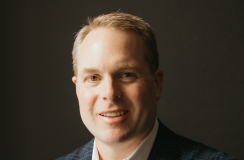
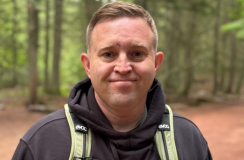


%20-%20thumbnail.png)


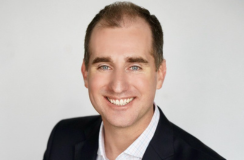


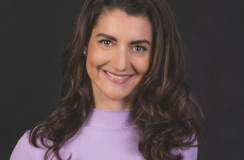

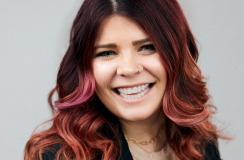
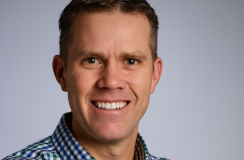

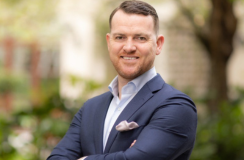



%20-%20thumbnail.png)





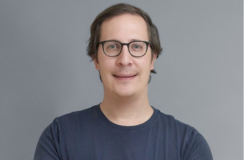
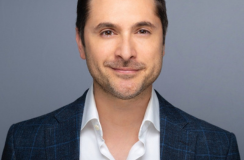
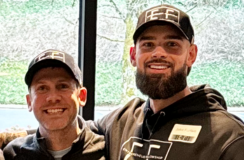
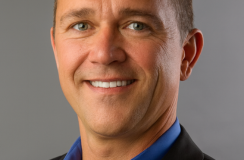
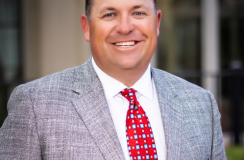

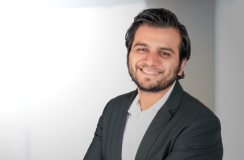

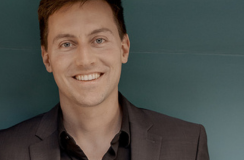
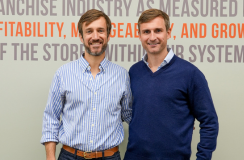
































































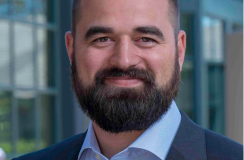
%20-%20thumbnail.png)

